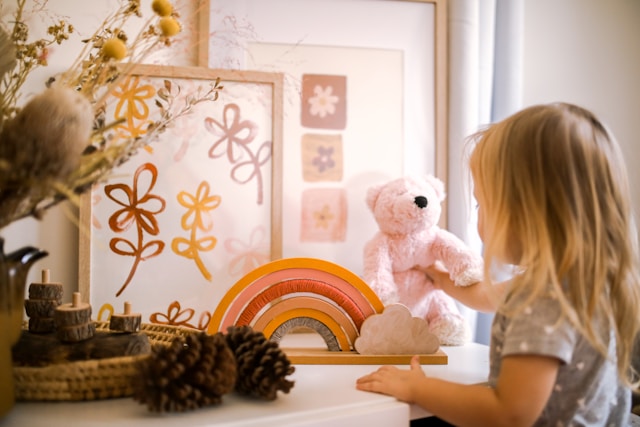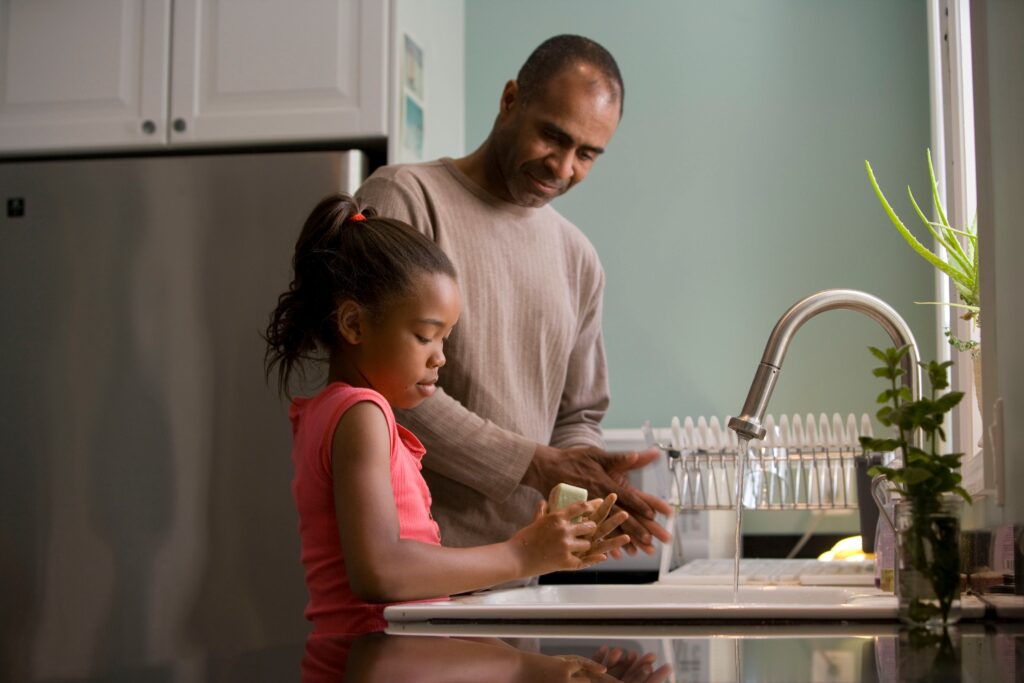
By Jassica Mendez
Instilling good habits that can last a lifetime becomes a unique opportunity when families move to a new home. Cleanliness is crucial for health and well-being, and a clean environment reduces stress and enhances mental health. This article, inspired by Belinda N. Mays’ engaging and educational writing, delves into making teaching kids about cleanliness in a new home both fun and impactful.
The Clean Slate Approach
Starting fresh in a new home is like opening a blank page. It’s an opportunity to write a new story about cleanliness and organization. Parents can involve their kids in setting up a clean space from the beginning. This method teaches them valuable skills while giving them a sense of ownership and pride in their home.
Create A Fun Routine
Now, making cleanliness fun might seem like a challenge. However, turning chores into games or competitions can spark children’s interest. For example, you could set up a “cleaning race” to see who can tidy their room the fastest. Establishing a reward system can also motivate kids. These strategies make cleaning less of a chore and also teach children the value of hard work and reward.
Teach Them Why Cleanliness Matters
Teaching kids about cleanliness in a new home starts with understanding the need to clean. Simple science experiments, such as showing how germs spread with glitter, can visually demonstrate the importance of washing hands and keeping surfaces clean. This approach educates but also makes learning about cleanliness engaging and memorable.
Integrate Cleanliness Into Daily Life
For cleanliness habits to stick, they must become part of daily routines. Consistency is key, and setting specific times for cleaning tasks helps children understand the importance of regular upkeep. Furthermore, integrating tasks like making their bed into their morning routine can foster emotional intelligence, teaching them about responsibility and the impact of their actions on their environment.
Encourage Ownership And Pride
When children have a say in organizing and decorating their rooms, it encourages a deeper sense of pride and ownership over their space. This personal connection can be a powerful motivator for maintaining cleanliness. Let them choose themes for their rooms or go over toy storage ideas with them so they can choose what appeals to them.
For example, a child who chooses a space theme might be more inclined to keep their “galaxy” clean if they understand that astronauts must keep their environment clean to survive. This approach ties their interests to the importance of cleanliness, making the concept more relatable and engaging.
Role Model Cleanliness
Children learn by example—they watch you, which fuels their curiosity to try and repeat what you do. When they see adults consistently cleaning and organizing, they understand these tasks as normal and necessary parts of daily life. Parents must demonstrate the cleanliness habits they want their children to adopt. This doesn’t mean being perfect but showing a genuine effort in maintaining a clean home.
Sharing chores can also be a bonding experience. When a family tackles a cleaning project together, it sends a message that cleanliness is a shared responsibility.
Expand Cleanliness Outside of Your Home
Extending cleanliness habits beyond the home teaches children to respect their broader environment. Participating in community cleanup events or setting up recycling projects at school can emphasize the importance of cleanliness on a larger scale—which will help your kids succeed and thrive. Do the following:
- Teach respect for public spaces
- Show the impact of collective efforts on community well-being
- Encourage environmental stewardship
Engaging in community service as a family can deepen a child’s understanding of the role cleanliness plays in health and safety, promoting a sense of civic responsibility.
Age-Appropriate Cleanliness Tasks for Kids
When teaching kids about cleanliness in a new home, start by assigning tasks that match a child’s developmental stage; here are tips and tasks suitable for each age group.
Ages 2-3
Focus on simple tasks that instill a sense of participation. Encourage them to pick up toys with colorful bins and sing cleanup songs to make the process enjoyable.
Tip: Use picture labels on bins to help them remember where things go.
Ages 4-5
Kids can handle slightly more complex tasks, such as making their bed with assistance or feeding pets. To motivate them, introduce a reward chart for completed tasks.
Tip: Break tasks into small, manageable steps and demonstrate each one.
Ages 6-8
At this stage, children can take on responsibilities like setting the table, dusting, and simple outdoor chores like watering plants.
Tip: Introduce a checklist for their daily tasks to promote independence.
Ages 9-12
With guidance, preteens can manage their laundry, help with meal prep, and take on more significant cleaning projects.
Tip: Encourage them to develop a cleaning schedule for their tasks, fostering time management skills.
Teenagers
Teens can handle most household chores and should be encouraged to take initiative in maintaining their spaces. Assign responsibilities like grocery shopping, cooking meals, and deep cleaning.
Tip: Discuss the importance of cleanliness in personal and communal spaces to prepare them for adulthood.
Keep Them Motivated
It’s normal for enthusiasm about chores to wane over time. When motivation dips, it’s helpful to revisit the goals and maybe adjust the approach. Keeping things fresh, such as introducing new games or challenges, can reignite interest. Remember, positive reinforcement goes a long way. Celebrate successes, no matter how small, to encourage ongoing effort.
As children grow, their abilities and interests will also change. Adapting cleanliness tasks to align with their development can keep them engaged. A teenager might prefer more autonomy in how they organize their space, for example.
Cleanliness Is A Foundation for Life
Teaching kids about cleanliness in a new home is more than just about keeping a tidy space. It’s about instilling values and skills that will serve them throughout life. Engaging children in the process enables parents to help them understand the importance of cleanliness, develop a sense of responsibility, and learn to work as part of a team. The journey to maintaining a clean home is a valuable opportunity for growth and learning, laying the groundwork for a healthy, organized lifestyle.


